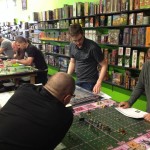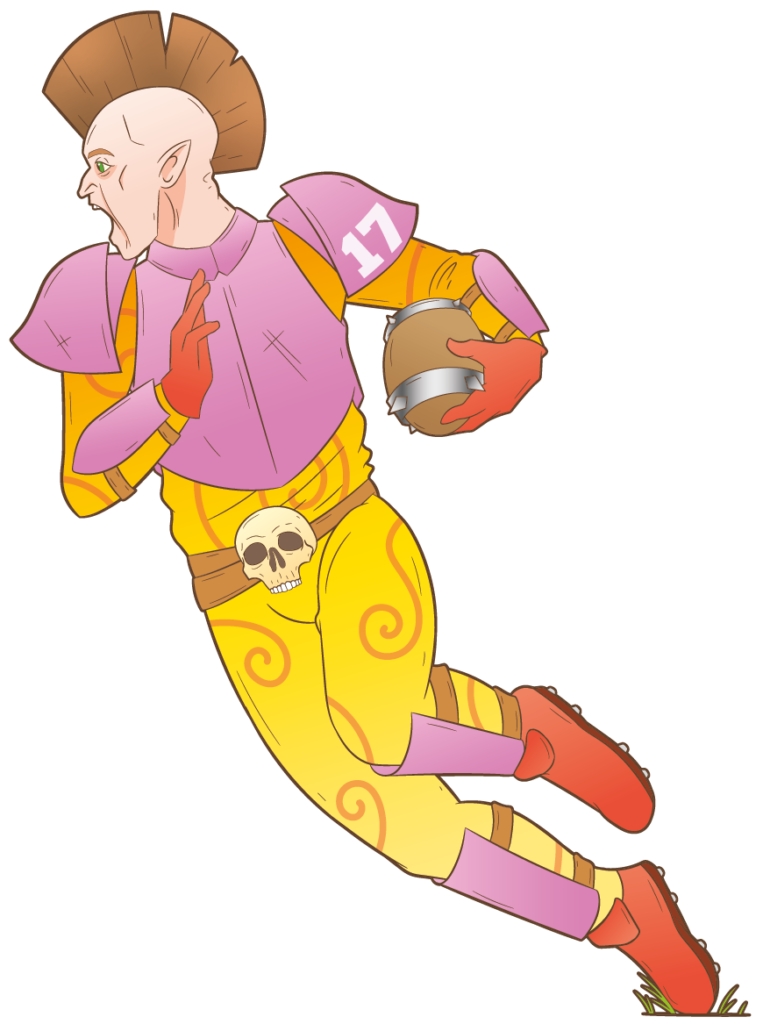If you’ve never been to a NAF-sanctioned tournament, what should you expect?
Planning your attendance
If you are not a NAF member yet it is worthwhile asking the tournament host if there is an option to sign up at their tournament, to not only get a potential discount, but also one of the attractive annual NAF gifts.
New players can also have a look at this page that addresses a lot of frequently asked questions.
Most first-time tournament attendees will likely go for a smaller tournament in their local area and avoid an 8h drive for their first experience. Have a look at our page where to find tournaments and fellow Blood Bowl coaches.
Depending on the location of the tournament, attendees are either local or staying nearby. This means there’s often some Friday or Saturday evening socialising, for example a meal or an arranged meeting place. When using public transport, make sure to leave some buffer when planning your return trip in case the tournament goes overtime.
Check the rules if you need to bring a board. You will always need to bring your own team, dice, and usually two rosters, one for handing in and one for your opponent’s reference. Some hosts will provide the rosters or have them posted online.
Individual tournament rulesets will vary, but typically you have a certain amount of gold to pick your team. Sometimes you have to pay for skills out of this money, other times you get to pick a “skill package”. Read the rulepack for the tournament, and ask for clarification from the organiser if it’s needed.
Players on your team with extra skills will need to be marked in some way – at the least by numbering your players, but skill rings are also very common. Teams are expected to be painted to a basic standard at least. Unless hosted by Games Workshop, tournaments do not require original miniatures and will allow third-party providers.
At the tournament

Most tournaments are three or four games over one day or five or six games over two. You will have approximately 2 – 2.5 hours to play a game, and if you go too far over, the game may be “called”, but this doesn’t happen very often.
Games are played competitively, but in a friendly atmosphere. If you forget to move your turn marker, for instance, your opponent will probably remind you.
Most tournaments are Swiss-style, which means that after a (usually) random first round teams with the same number of points are drawn against each other. As a result, you are playing against someone who is doing about as well as you are. This continues until the final round, but check individual tournaments for details on how the final winner is decided.
Most tournaments are also Resurrection, which means that injuries are not carried forward and you will play each round with the same roster.
It is worth taking a moment at the start of each game to discuss with your opponent what you will both consider to be a cocked dice.
If you know that you are a player that may struggle to play your game within the time limits then there are a variety of free timer apps that you can download to your phone before the tournament starts.
Further links
Check out Jip’s report on his first tournament experience.
King_Ghidra has written an introduction to tournament play on Goonhammer.
Listen to this joined special of Both Down and Three Die Block podcasts about what to expect when attending a tournament, or this earlier Both Down episode about tournament etiquette.
